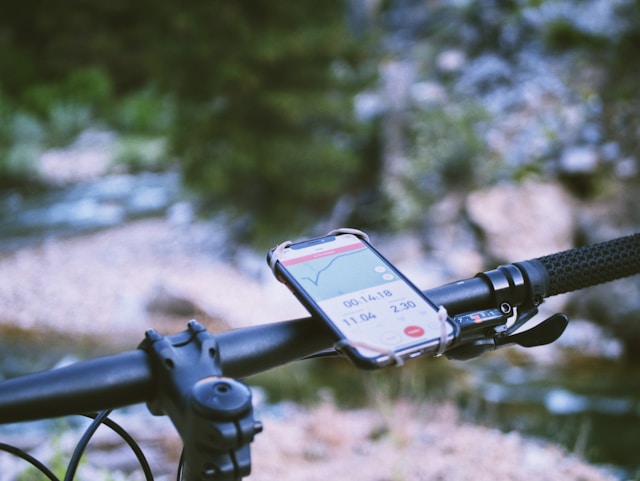Cycling enthusiasts, whether pedaling through serene countryside lanes or bustling city streets, understand the importance of having a reliable app to track their rides, analyze performance, and connect with a community of like-minded individuals. In the digital age, two giants stand out in the cycling world: MapMyRide and Strava. Each app boasts unique features designed to enhance the cycling experience, but which one truly pedals ahead of the competition? This exploration offers an in-depth comparison focusing on features, user experience, and accuracy of tracking, ensuring riders can make an informed decision tailored to their cycling needs and preferences.
MapMyRide – Navigating Through Its Features
MapMyRide, a pioneer in the cycling app domain, has long been a trusted companion for cyclists around the globe. It provides an extensive map database, allowing riders to discover new routes or track their favorite rides with ease. What sets MapMyRide apart is its emphasis on community and route sharing, making it a social hub for cyclists who love to explore and share their adventures. The app’s interface is user-friendly, catering to both novice and experienced riders looking for a comprehensive cycling tool. However, it’s not just about tracking and sharing; MapMyRide also offers detailed analysis of your rides, from speed and distance to elevation gain, helping cyclists to understand their performance and set new goals. Despite its robust feature set, some users find the GPS accuracy can occasionally waver, leading to slight discrepancies in ride data.
Strava – More Than Just Tracking
Strava, on the other hand, transcends the conventional cycling app. It has cultivated a reputation not only for its precise tracking capabilities but also for fostering a competitive yet supportive community of athletes. The app’s segment feature is a game-changer, allowing riders to compete against themselves or others on specific parts of their route, injecting an element of competition and camaraderie into every ride. Strava’s analysis tools are top-notch, offering insights into performance over time, and its social networking features encourage connection and motivation through kudos and comments. While Strava excels in many areas, its premium features, which include advanced analytics and personalized coaching, come at a cost, leaving some users weighing the value of these additional benefits.
Accuracy and User Experience – A Side-by-Side Comparison
When it comes to choosing between MapMyRide and Strava, the devil is in the details. Both apps offer a rich set of features designed to enhance the cycling experience, but they cater to slightly different audiences. MapMyRide’s user-friendly interface and extensive route database make it ideal for cyclists who prioritize exploration and community interaction. Strava, with its advanced performance analytics and competitive segments, appeals to those looking to push their limits and engage with a broader athletic community. In terms of accuracy, both apps are generally reliable, but variations in GPS signal and data processing can affect the precision of ride tracking. Ultimately, the choice between MapMyRide and Strava depends on the individual’s preferences, goals, and willingness to pay for premium features.
The Expanding Universe of Cycling Apps
Beyond MapMyRide and Strava, the digital landscape is teeming with apps catering to every aspect of cycling. Apps like Zwift transform indoor cycling sessions into immersive virtual experiences, while Komoot specializes in route planning and navigation, ideal for adventure cyclists. Ride with GPS offers meticulous route planning tools and detailed navigation cues, appealing to long-distance riders and explorers. MyFitnessPal integrates nutrition tracking with exercise, a boon for cyclists focusing on overall fitness. Endomondo, now part of the MapMyRide family, continues to be a favorite for its versatile tracking across multiple sports, including cycling. Garmin Connect, Wahoo Fitness, Cyclemeter, TrainerRoad, Peloton, Runtastic Road Bike, and Bike Computer are other notable mentions, each with its unique strengths, from detailed analytics to interactive training sessions and community features. Personal preferences vary, but the consensus leans towards Strava for its social features and competitive edge and MapMyRide for its user-friendly interface and route discovery capabilities.
The Top Cycling Apps for Every Rider
Cycling enthusiasts are spoilt for choice with an array of apps designed to enhance their riding experience. From immersive indoor training platforms to comprehensive route planners, here’s a quick rundown of some standout apps, each with its own niche in the cycling ecosystem:
- Zwift: Turns indoor training into a game, offering a virtual environment where cyclists can interact, compete, and train together in real-time.
- Komoot: Excelling in route planning and navigation, it’s the go-to for adventure cyclists and those looking to explore uncharted territories.
- Ride with GPS: Favoured for its detailed route planning tools and turn-by-turn navigation, making it a reliable companion for long-distance journeys.
- MyFitnessPal: Integrates nutritional tracking with exercise, catering to those who are as focused on their diet as their pedal power.
- Endomondo: Offers versatile tracking across multiple sports, including cycling, now part of the MapMyRide ecosystem, enhancing its social features.
- Garmin Connect: A robust platform for those already invested in the Garmin ecosystem, offering detailed analytics and custom training plans.
- Wahoo Fitness: Syncs seamlessly with Wahoo hardware, providing a streamlined experience for tracking and improving cycling performance.
- Cyclemeter: A powerful option for data junkies, offering extensive metrics and customization without the need for additional hardware.
- TrainerRoad: Focuses on structured training plans and workouts, ideal for serious cyclists and competitors looking to improve their performance.
- Peloton: Known for its indoor cycling classes, offering live and on-demand sessions that bring a high-energy studio experience to your home.
- Runtastic Road Bike: Tailored for road cyclists, featuring route tracking, weather information, and fitness monitoring.
- Bike Computer: Offers a minimalist, user-friendly interface that turns your smartphone into a functional bike computer, focusing on essential metrics.




